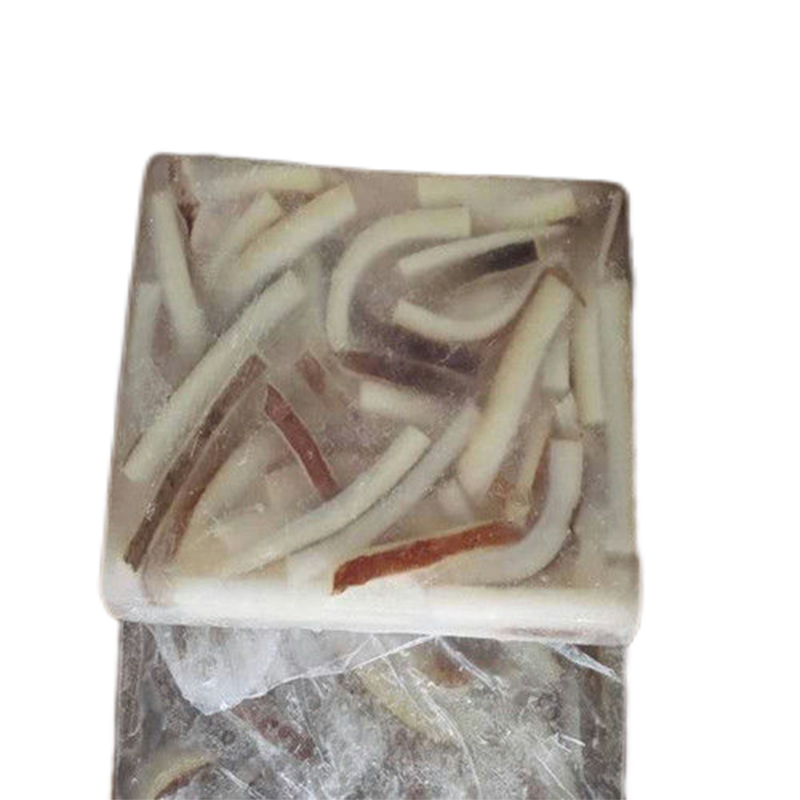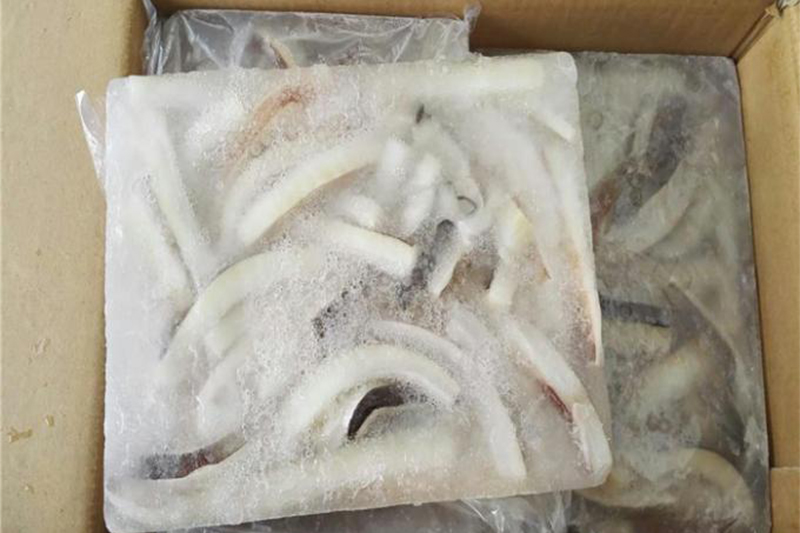Eating squid at restaurants is pretty commonplace, especially given the popularity of calamari. But preparing it at home is a less-common feat, and tackling these tentacled sea creatures may prove too intimidating for the average home cook. Cleaning and handling squid is a relatively simple process, however; with a bit of confidence and practice, it can be done easily.
The trick to a properly-cleaned squid is to understand how to carefully remove the squid's insides while keeping the tentacles and body meat intact. Properly cutting out the inedible pieces like the ink sac, beak, and cartilage will leave you only with delicious, mild squid meat; you'll want to use a sharp knife to do so. Have some water ready for draining the ink and washing the squid (and, optionally, a pair of gloves to keep hands from getting stained). With a few quick cuts, you'll be on your way to delicious squid dishes in no time. Eating Dried Squid

First, separate the head and insides of the whole squid by gripping and pulling the legs; it should come off neatly. With the squid in two parts, remove the ink sac (which should be visibly black inside the squid guts) without cutting or breaking it; you can squeeze out the squid ink into a bit of water to save it for cooking, but be careful as it will stain hands and surfaces. Then slice off the squid's tentacles in one piece, core out the beak at the center with a sharp knife, and remove the tail and cartilage from the squid's body — it should look like a piece of plastic or glass.
You can leave the squid's membrane on, a darker section of the squid's skin with visible spots, or you can remove it. Finally, give the squid's body a good rinse and slice it into rings.
With your newly cleaned squid, you can make any number of delicious seafood recipes. Calamari is always a good standard choice; one reason calamari is so popular is partly due to squid's extremely mild flavor. Fresh squid has a subtle sweetness but tastes very neutral overall. While you can certainly enjoy squid's natural flavor — as some do in sushi or other simple dishes — squid can also be an excellent vessel for more robust flavors, which is why it's often seen used in pasta dishes with strongly flavored sauces or in rich seafood soups and stews. It also goes well with a bit of spice.
Squid ink, harvested from the squid's ink sac, is a popular ingredient in certain recipes, especially pasta. The ink has an earthy, briny flavor that pairs well with the seafood it's harvested from. It's often used to flavor pasta sauces (and to add color to the pasta itself) but can also be used in dishes like risotto and soup.

Dried Up Squid You can also use squid alongside shellfish in dishes like cioppino or Fruitti di Mare, which contain a medley of undersea delicacies. These recipes typically call for the squid pieces to be added toward the end of the cooking time to ensure they turn out tender and delicious.